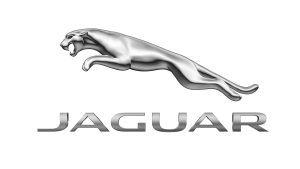Jaguar Insurance
Free Insurance Comparison
Compare Quotes From Top Companies and Save
Secured with SHA-256 Encryption
Kristen Gryglik
Licensed Insurance Agent
Kristen is a licensed insurance agent working in the greater Boston area. She has over 20 years of experience counseling individuals and businesses on which insurance policies best fit their needs and budgets. She knows everyone has their own unique needs and circumstances, and she is passionate about counseling others on which policy is right for them. Licensed in Massachusetts, New Hampshire,...
Licensed Insurance Agent
UPDATED: Dec 4, 2023
It’s all about you. We want to help you make the right coverage choices.
Advertiser Disclosure: We strive to help you make confident insurance decisions. Comparison shopping should be easy. We are not affiliated with any one insurance provider and cannot guarantee quotes from any single provider.
Our insurance industry partnerships don’t influence our content. Our opinions are our own. To compare quotes from many different insurance companies please enter your ZIP code on this page to use the free quote tool. The more quotes you compare, the more chances to save.
Editorial Guidelines: We are a free online resource for anyone interested in learning more about insurance. Our goal is to be an objective, third-party resource for everything insurance related. We update our site regularly, and all content is reviewed by insurance experts.
Car insurance is one of the biggest expenses for any car owner. Jaguar insurance premiums vary, so it’s not easy to estimate your cost before you buy a new car.
Insurance companies base their premiums on several variables including your gender, age, driving record, and location. However, one of the biggest factors insurance companies take into consideration is the type of car you drive–sports car, coupe, sedan, mini-van, or an SUV.
They use statistics and ratings for your vehicle to determine a good portion of your premium costs in your car insurance quote. Because of this, knowing more about your vehicle makes it easier to estimate your insurance rates.
How Much Does Jaguar Insurance Cost?

It’s always a good idea to obtain quotes from multiple insurance companies before buying a policy, but before you do that, you need to have an idea of just how much insurance you need.
The total amount of coverage you’re required to carry depends on your state’s laws and your lender if you take out a loan.
However, if you have valuable assets like a new jaguar, you might want to think about increasing your liability coverage to make sure you’re fully protected in the event of an accident.
While these are all important items to consider, you should also take some time to review how becoming a jaguar owner affects your insurance premiums.
Safety Rating and Damage Threshold
The Jaguar X-Type received a “Good” safety rating in the Moderate Overlap Front category.
These tests showed only a minimal risk of injury to front-seat passengers.
However, this alone probably won’t decrease your Jaguar insurance rates because the model only achieved “Marginal” safety ratings when it was crash-tested using the side of the vehicle, and it has “Poor” ratings for head and seat restraints.
The S-Type Jaguar did receive “Good” ratings for its head and seat restraints, but it wasn’t tested in other areas, so it’s unlikely that your rates would be lower based on these figures alone.
Comprehensive and Collision Coverage
The cash value of your car is another factor insurance companies look at, especially when computing your comprehensive and collision coverage.
This coverage pays for damage to your vehicle if there’s a loss, so it makes sense that the car’s value is reflected in your rates.
Being luxury cars, Jaguar models have a relatively high sales price, and there’s a good chance the overall value of the car will increase your insurance premiums.
However, you can save some money on your insurance by purchasing a sedan instead of a coupe and buying a Jaguar that’s used instead of new.
For comparison, in San Francisco a brand new 2018 Jaguar F-Type costs between $53,717 and $57,268, while a used 2017 Jaguar XE costs between $23,760 and $28,423.
Because there’s such a large difference in the car’s value, there’s bound to be a drastic difference in insurance premiums for these two vehicles.
If you want an option that’s somewhere in the middle, consider purchasing a new 2018 Jaguar E-PACE P250.
This SUV’s base model costs between $36,783 and $38,754 in San Francisco, so while your insurance rates won’t be as low as they could be if you owned the sedan, they should be lower than the rates for the F-Type.
Claims Frequency and Potential to Cause Damage
The frequency of claims reported for specific vehicle types also factors into your Jaguar insurance premium.
The more claims filed and more dollars spent in losses for a specific vehicle on average, the higher the insurance rates for that car across the board.
According to the Insurance Institute for Highway Safety (IIHS), Jaguar’s F-Type and XE both have collision claim averages that are well above what’s considered normal, as do the Jaguar XF and Jaguar XJ.
The XF and XJ also have a higher-than-average amount of comprehensive claims filed.
So overall, there’s a good chance Jaguar’s overall claims frequency ratings could increase your insurance premiums.
Insurance Discounts
Fortunately, when it comes to safety features, luxury cars like Jaguars are typically loaded.
This could score you several discounts on your auto insurance.
The type of discounts available vary between insurers, but some of the more common discounts for safety features include those for anti-lock brakes, daytime running lights, rearview cameras, blind-spot detection warnings, and passive restraint systems.
As a luxury car manufacturer, Jaguars are well-equipped with safety features.
The F-PACE has a lane keep assist and driver condition monitor, front and rear parking aids, and a rear camera, as does the I-PACE and E-PACE.
The FX also has advanced parking aids, a 360-degree surround camera, and an adaptive speed limiter, and the XJ has all of this plus a lane departure warning.
In addition, all models also have passive restraint systems and air bags.
Enter your ZIP code below to view companies that have cheap insurance rates.
Secured with SHA-256 Encryption
How To Shop for Jaguar Car Insurance
You should choose an insurance company that offers you a decent price, but that’s not the only thing you should consider.
When shopping around for Jaguar insurance evaluate the company’s:
- Financial ratings
- Customer service ratings
- Claims process and claims satisfaction ratings
Before obtaining Jaguar insurance quotes, it helps to first gather all of the information for your vehicle, including the year, make and model, a list of the car’s safety features, and basic information for all household drivers.
You should also compile a list of questions to ask each insurer including:
- How does a higher deductible affect the rates?
- Do you offer free roadside assistance?
- Can I bundle other insurance services like life insurance or home insurance with my car insurance policy?
- Do you offer a discount for good drivers?
- Are there any discounts available for cars that aren’t driven a lot?
Because Jaguars are considered luxury vehicles, you could face limited options when it comes to insurance.
Not all insurance companies cover luxury vehicles, and those that do might require you to carry specialty insurance since they cost a lot more to replace and repair than most other vehicles.
What to Know About Jaguar
The precursor, the Swallow Sidecar Company, to the Jaguar brand was created in 1922 by William Lyons. The first Jaguar Land Rover Ltd. company car was manufactured in Great Britain in 1935, and since then, the company has consistently pushed industry boundaries in an effort to create high-quality luxury vehicles.
Jaguar’s became increasingly popular in the 1960s with the introduction of the e-type model. Currently, Jaguar is owned by the Indian company Tata Motors and is an appointed representative of the financial conduct authority.
Understanding how becoming a Jaguar driver affects your insurance premiums puts you ahead of the game.
The more information you have, the easier it is to shop for a car insurance policy with confidence.

